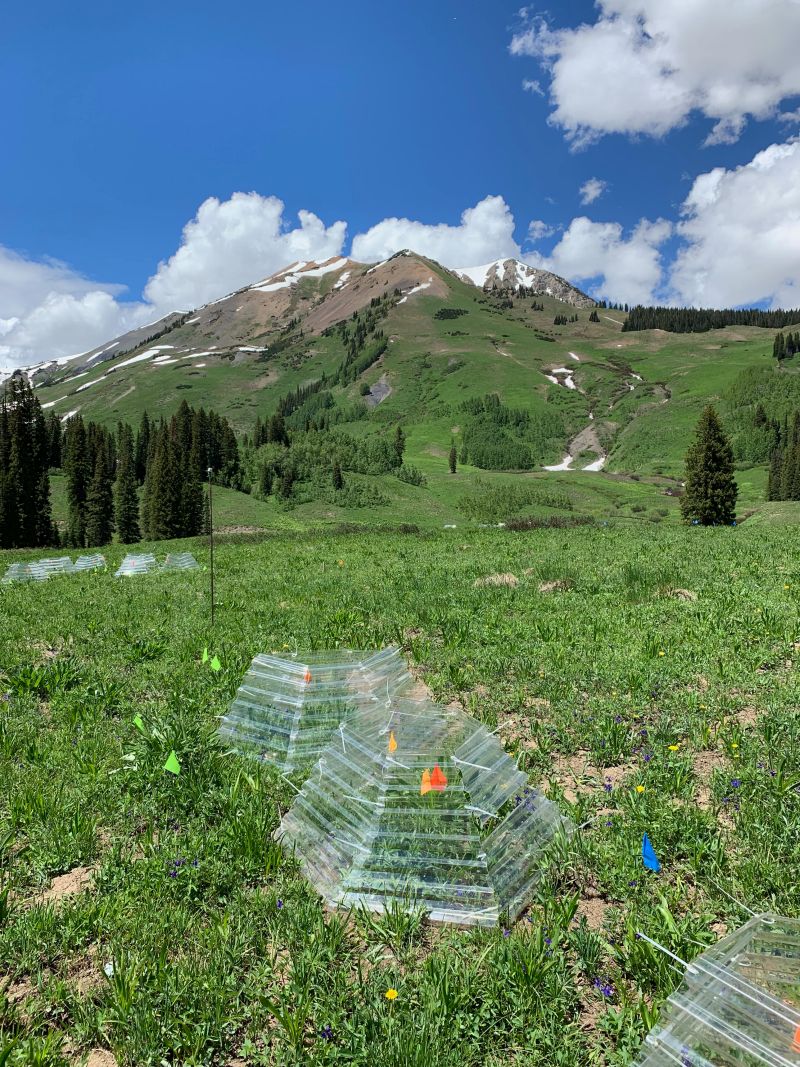Open-top warming chambers reduce animal pollination of two subalpine herbs
DOI:
https://doi.org/10.26786/1920-7603(2021)638Keywords:
climate change, experimental warming, OTC, pollen deposition, pollinator visitationAbstract
Open top chambers (OTCs) are a popular method for studying the biological effects of climate change through passive heating, but their effects on biotic interactions are poorly understood, especially for pollination. Here we use the subalpine plants Delphinium nuttallianum and Potentilla pulcherrima to examine the possibility that the effects of OTCs on plant reproduction are not the result of warming but rather OTCs acting as barriers to pollinator movement. Pollinator observations were conducted and stigmas collected from plants inside and outside of OTCs in a meadow in the Rocky Mountains of Colorado, USA. Very few visitors were observed inside of OTCs, which led to severe reductions in visitation rates, by 92% in Delphinium and 85% in Potentilla. The number of conspecific pollen grains on stigmas was 73% lower in OTCs for Delphinium but not Potentilla, likely because it is capable of autogamous self-pollination. This study clearly shows that OTCs can reduce animal pollination, which is also likely to reduce plant reproductive output of outcrossing plants via decreases in the quantity or quality of pollen. OTCs may therefore confound effects of warming on plant reproduction with pollination effects. Although the unintended effects of OTCs on abiotic conditions are well-studied, this study highlights that their effects on biotic interactions require further investigation.

Downloads
Additional Files
Published
How to Cite
Issue
Section
License
Copyright (c) 2021 Carter Perez Adamson, Amy Iler

This work is licensed under a Creative Commons Attribution 4.0 International License.











